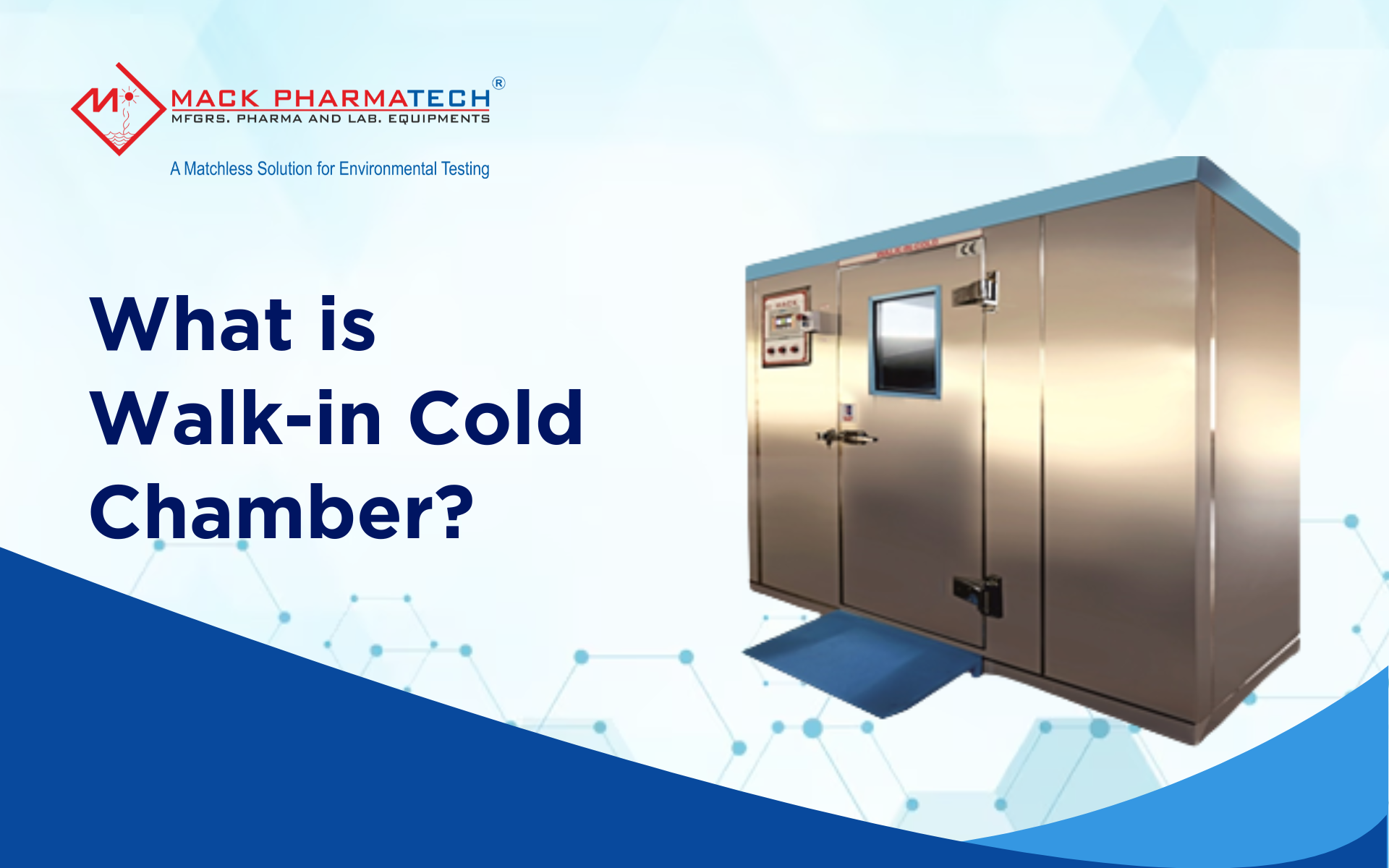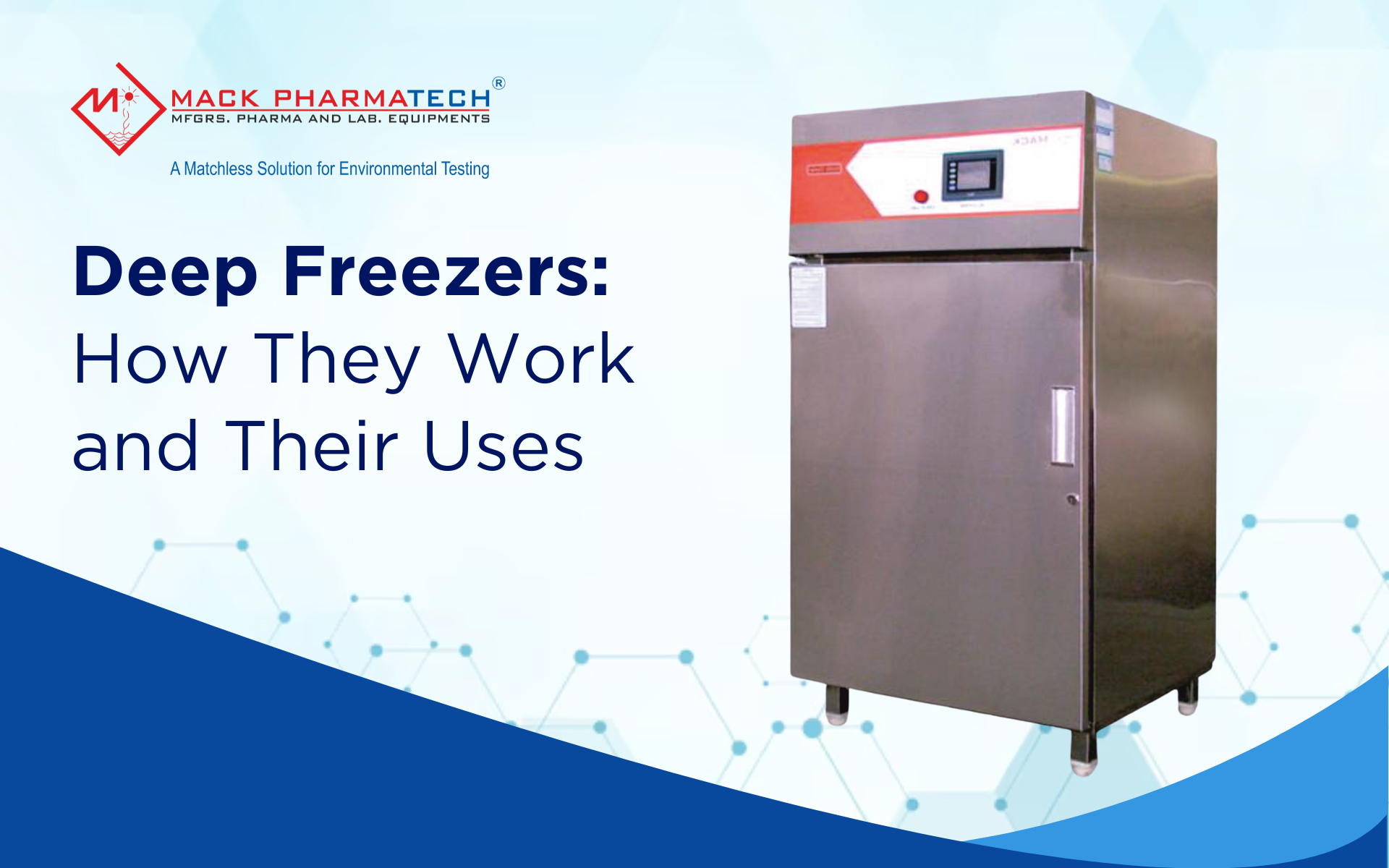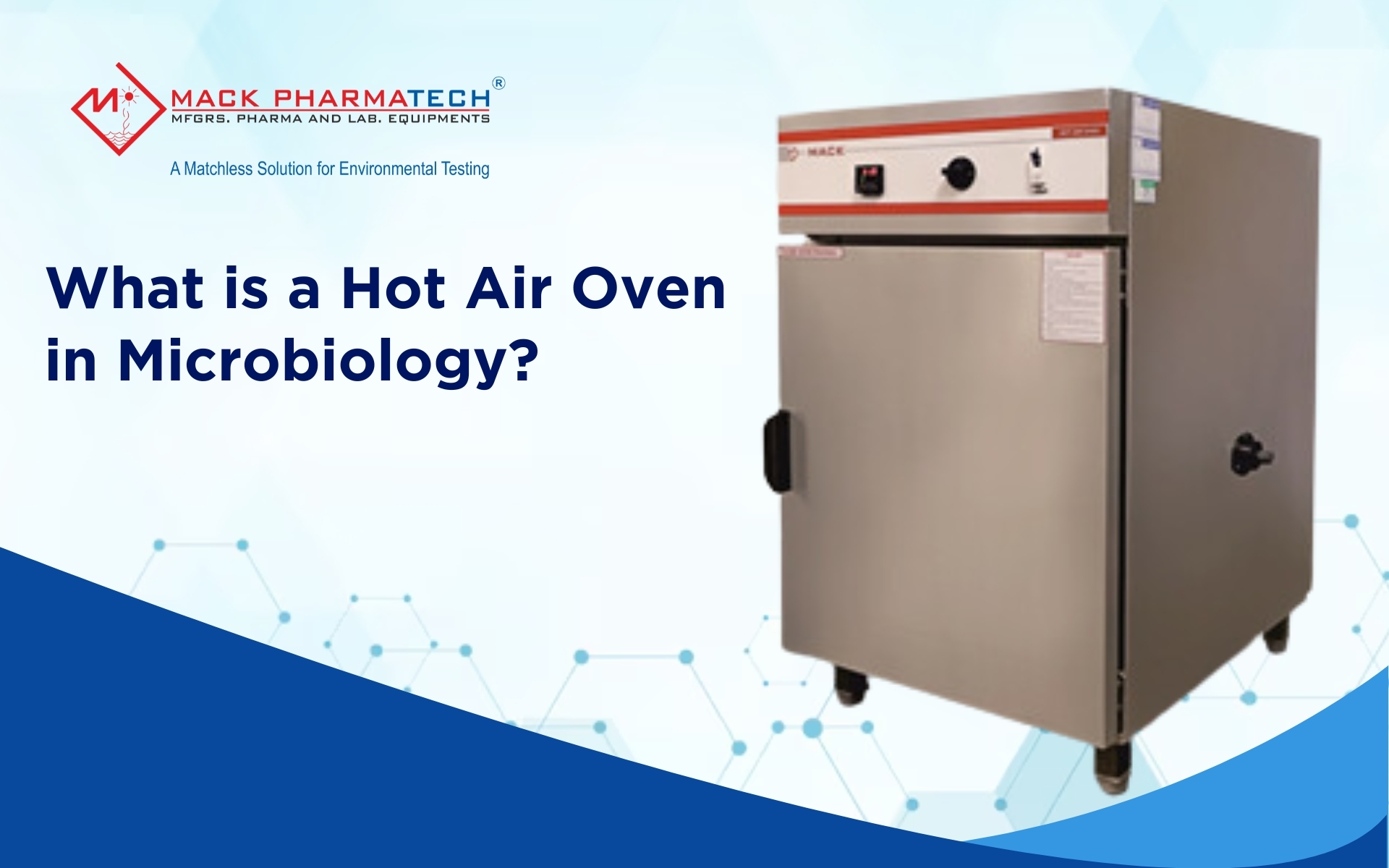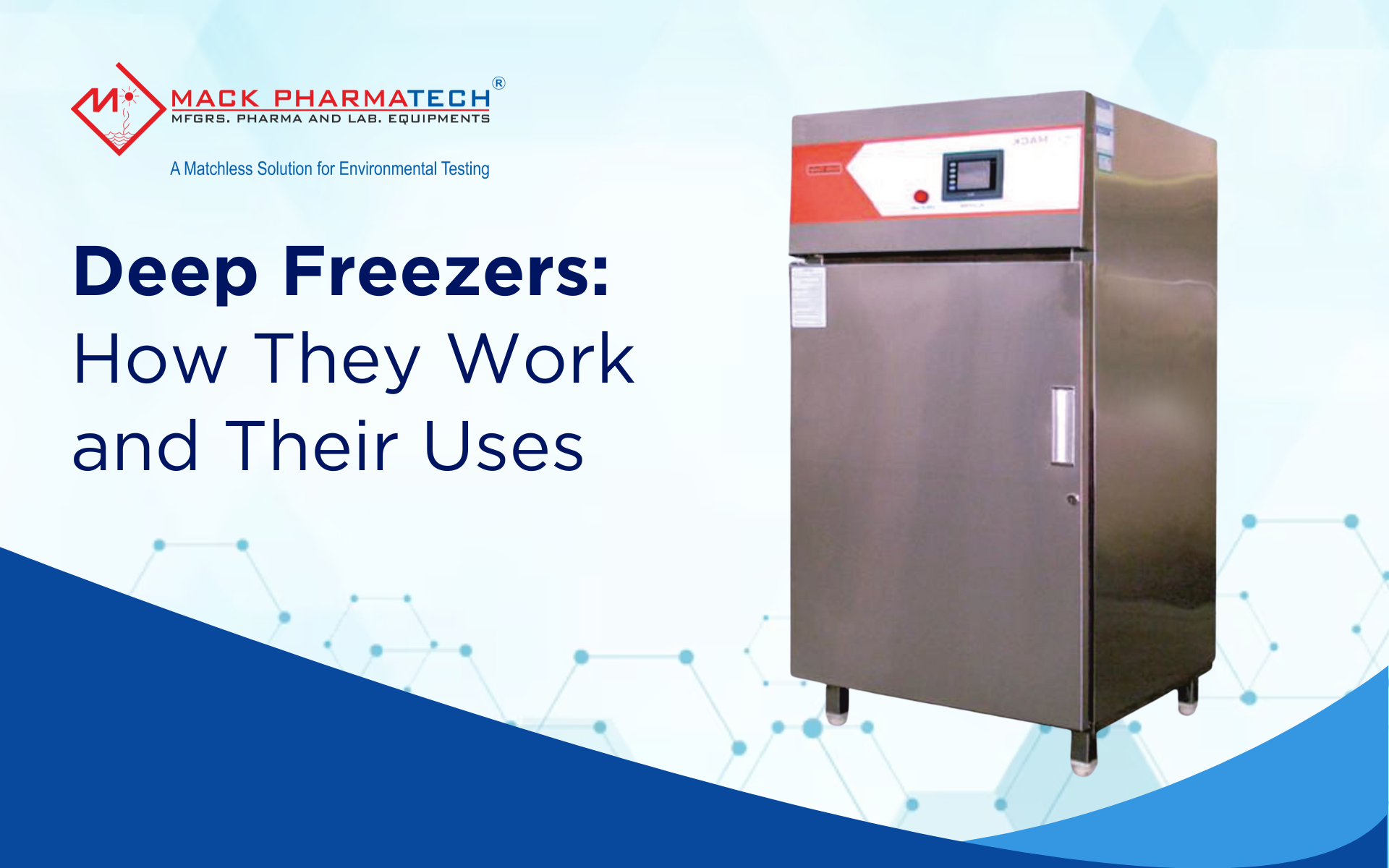A walk-in cold room also called a walk-in cold chamber is essentially a large, purpose-built refrigeration unit. Unlike standard freezers or fridges, it’s spacious enough for people to enter and designed to maintain precise temperature (and often humidity) control for sensitive products.
In the pharmaceutical and medicine manufacturing sectors, these chambers are mission-critical for storing vaccines, APIs, biologics, lab samples, and stability study batches at controlled temperatures.
Why Walk-In Cold Rooms Are Important
Walk-in cold rooms play a critical role in product safety and shelf-life.
- Pharmaceutical Industry → Vaccines, medicines, and APIs must be stored under strict temperature conditions to meet WHO and GMP guidelines.
- Food Industry → Meat, seafood, dairy, bakery, and beverages stay fresh for longer without losing nutritional value.
- Hospitality Industry → Hotels, restaurants, and catering services use them to manage bulk ingredients while maintaining hygiene.
Without proper cold storage, products face risks like spoilage, bacterial growth, and compliance failures, leading to huge financial losses.
How Do Walk-In Cold Rooms Work?
A walk-in cold chamber operates on the principle of refrigeration and insulation.
- Insulated Structure → Walls, ceiling, and floor are made of PUF insulated panels that prevent heat from entering.
- Refrigeration Unit → Uses a compressor, condenser, and evaporator to remove heat and cool the chamber.
- Air Circulation System → Ensures uniform cooling across all shelves and racks.
- Temperature Control → Digital controllers and sensors maintain set points, often between +2°C to +8°C (chilled storage) or -18°C and below (frozen storage).
- Backup Systems → Many pharma-grade cold rooms have alarms, generators, and monitoring systems to prevent failures.
This combination ensures products remain stable, safe, and compliant with storage standards.
Types of Walk-In Cold Chambers
Walk-in cold chambers generally fall into two main categories based on their operating temperature:
1. Walk-in Coolers (Refrigerators)
- Maintain temperatures above freezing (0°C to 8°C / 32°F to 46°F)
- Ideal for cooling and short-to-medium-term storage of:
- Vegetables & fruits
- Dairy products
- Bakery items
- Certain medications
2. Walk-in Freezers
- Operate at sub-zero temperatures (-18°C to -23°C / 0°F to -10°F)
- Designed for freezing and long-term storage of:
- Frozen meat & seafood
- Ice cream & frozen desserts
- Biological samples
- Some pharmaceuticals
- Advanced models can reach -80°C or below, often used in labs and biotech research.
Key Features of walk-in cold rooms
1. Temperature & Environmental Control
- Temperature ranges:
- Standard cold rooms: ~2 °C to 8 °C.
- Walk-in chillers: around +1 °C to +8 °C.
- Freezers & deep-freeze chambers: range from –1 °C to –80 °C, especially for ultra-cold biopharma storage.
- Humidity control: Vital for drug and vaccine integrity; many pharma chambers regulate both temperature and moisture
2. Insulation & Construction
- Built with thick, high-density panels (polyurethane, PIR, foamed-in-place) for airtight insulation.
- Seamless panels (e.g., fiberglass in Polar King units) prevent moisture buildup, contamination, and bacterial growth.
3. Advanced Controls & Monitoring
- Digital systems enable real-time tracking, remote alerts, and precise environmental control essential for regulated operations.
- For pharma, features like temperature mapping, logging, and compliance (e.g., GMP, FDA/ICH) are a must.
4. Safety, Validation & Compliance
- Many solutions include emergency alarms, personnel safety sensors, ADA compliance, and door safety mechanisms.
- Good practice includes IQ/OQ/PQ validation protocols to ensure consistent environmental performance.
5. Adaptability & Scale
- Walk-in units are modular, allowing custom layouts, multi-temperature zones, or ultra-low-temp sections within a single chamber.
- Upgradable panels, shelving, door types, and redundancy systems add flexibility over facility lifetime.
Walk-in cold rooms are no longer optional they are a must-have for pharma, food, hospitality, agriculture, and research industries. They ensure product safety, longer shelf life, and compliance with global standards.
If you are looking for custom-designed walk-in cold chambers for your pharma or food business in India, Mack Pharmatech provides advanced, energy-efficient, and reliable solutions tailored to your needs.
What is a walk-in cold room used for?
What is the temperature of a cold room?
What is the difference between a cold room and a freezer room?
Why are cold rooms important in pharma?
Can cold rooms be customized?










